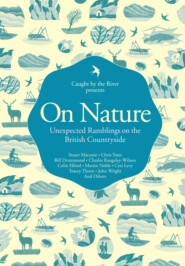По всем вопросам обращайтесь на: info@litportal.ru
(©) 2003-2025.
✖
How Can I Stop Climate Change: What is it and how to help
Настройки чтения
Размер шрифта
Высота строк
Поля
The Carteret Islands – a small horseshoe of atolls in the Pacific Ocean – form part of Papua New Guinea. Their once-fertile vegetable gardens are now all poisoned by salt. Lying less than 1.5 metres above sea level, the islands are frequently flooded by tidal surges. Bernard Tunim, who lives on Piul Island, describes the effects of a tidal surge: ‘We planted banana, taro, even tapioca, cassava and other fruit trees. But just last month we had these high tides and it swept the whole area. We had waves coming from three sides, and so this place was flooded with sea water. All that we had from banana to taro and cassava just dried up. But we don't want to move because we know that this is our own land.’
Bernard says the islanders are angry at the prospect of having to leave their home – victims of a problem they are not responsible for. ‘We believe that these islands are ours and our future generation should not go away from this island.’
rising rivers
Seasonal flooding is a way of life for people on the flood plains of Bangladesh; but recent years have seen a combination of heavy monsoons, deforestation and faster glacial melting swelling the rivers. Andean villagers in Peru face a similar threat: it’s estimated that some 30,000 people have died as a result of sudden glacial floods. Disappearance of the ice also poses a threat to the water supply for the 7 million people who live in Lima.
rising seas
The coastlines of Vietnam and Bangladesh, small islands in the Pacific and Caribbean, and large coastal cities such as Tokyo, New York, Cairo and London are all threatened by rising seas.
Flood defences such as the London Thames Barrier can provide some protection – at a cost. The £535 million barrier was designed to offer protection against highly infrequent but dangerous storm surges. It had been used 103 times by 2007.
The impacts of higher seas are well known: high tides and storm surges come further and further inland, damaging property, washing away roads, contaminating fresh water and making it difficult for anything to grow. The low-lying Pacific island Tuvalu now depends on imported food and its people are seeking refugee status in neighbouring New Zealand as the sea takes over their homes.
Thames Barrier, 1983–2007
wildfires
Hot, dry weather increases the risk of wildfire. In recent years wildfires have rampaged through southern Europe, Australia, California and the Amazon.
Wildfires can improve conditions for vegetation and encourage wildlife. But with dry weather and strong winds they can also burn out of control. As temperatures rise, northern California is predicted to see wildfires increase by up to 90 per cent by the end of the century. In 2007 Greece experienced some of the worst wildfires ever recorded in the country, destroying forests around Olympia and scorching stones that have been there for 2,500 years. Sixty-five people died in a spate of fires over a ten-day period.
Britain’s moorlands, particularly peat bogs in the Peak District, are vulnerable. In the summer of 2003 satellite images showed clouds of smoke drifting from the moors over the Irish Sea. Aircraft at Manchester Airport were unable to land and drivers kept their headlights on during the day for several days.
Scientists pin the blamefor an increase in wildfiresin the western UnitedStates on risingtemperatures (below).
Forest in flames
where we’re feeling the heat
Climate scientists predict that with summers becoming hotter and drier in some regions, there will be more cases of extreme drought. Here’s how different parts of the world are already being affected.
By 2100 – within the lifetimes of our grandchildren – half of he world’s land could see reduced rainfall, causing drought.
record-breaking temperatures in the UK
Temperatures in central England have increased on average by 1°C since 1960, and individual months are getting warmer year by year.
People are feeling it. The heat wave of summer 2003 killed more than 2,000 people in the UK, and in 2006 a heat wave led to a shortage of grazing land for dairy herds, pushing up the costs of milk production. A 2006 survey of farmers found 60 per cent claiming that they were already feeling the effects of climate change. In some parts of southern England farmers are introducing crops once thought more appropriate to more exotic climes, including apricots, sunflowers and maize. Olives are thriving in Devon and English wines are gaining fans as growing conditions become more suitable. But not all fruits are benefiting – milder winters are not very good for blackcurrants, for example, which need cold weather to bear fruit. And drier summers mean that more and more fruit farmers are having to irrigate their crops.
heat waves in Europe
The past decade has seen chaotic weather across Europe. A heat wave in 2003 contributed to the death of an estimated 35,000 people across the continent, prompting experts to call it one of the deadliest climate-related disasters in Western history. Financially the damage was estimated at more than 13 billion euros. Harvests were badly hit and in France six power stations had to close because of low water levels in the rivers used for cooling systems.
And it appears 2003 was not an exception: temperatures again hit record highs of 46°C in south-east Europe in 2007, contributing to the deaths of more than 500 people in Hungary. According to climate experts, summers like 2003 are likely to become more and more common.
CURRANT CONCERN:
Fruits such as apple, strawberry, and blackcurrant need a sustained cold period to flower and fruit normally. But winters are becoming progressively milder – worrying times for the UK’s £230 million-a-year fruit industry.
English wine – treading new ground
Total area of vineyards in production in the UK
Source: Indicators of Climate Change in the UK (ICCUK)
The expansion of English and Welsh vineyards, although not attributable to climate change alone, shows the impact of warmer summers, market forces and wine-makers’ expectations of global warming within our lifetime.
have potatoes had their chips?
Walter Simon has been growing potatoes in Pembrokeshire, Wales, for more than 20 years. Farming has altered in that time, he says, as a result of changes in the weather. Planting happens earlier, and the harvest comes earlier too. Walter concedes that milder winters have made life on the farm easier in some ways – outside pipes no longer need lagging and the sheds where he lays out the potatoes for seed no longer have to be proofed against draughts. Now his main worry is making sure the sheds get enough ventilation to keep them cool.
Walter grows early potatoes and relies on irrigation to water his crop, but he worries about growing seasons extending elsewhere in the country. An earlier harvest in the east of England, for example, could push him out of the market. In 20 years’ time, he says, they probably won’t be growing potatoes in Pembrokeshire. ‘We’ll be growing apricots or something,’ he suggests. ‘But it is the speed of the change that concerns people. It’s not been as gradual an evolution as things may have been in the past.’
down under gets a roasting
In the space of just five years, 2002-2006, Australia suffered three of its worst droughts on record. ‘A frightening glimpse of the future with global warming’ was how South Australia’s Premier, Mike Rann, described the 2006 drought.
In South West Australia annual total rainfall has declined by some 15-20 per cent in the past 30 years. As elsewhere an early casualty is farming. Harvests have been failing completely or drastically reduced. Rice production has plunged by more than 90 per cent during the past decade. Irrigated crops such as citrus and vines are particularly vulnerable as water levels decline (grape production fell by nearly a third in 2007).
The high temperatures are having some more bizarre consequences. Players at the Australian Open tennis tournament in 2007 had to abandon the outside courts during the day because it was too hot. They restarted in the evening and went on into the night – one match ended at 3 am.
BREAK POINT:
Global warming affects our world from top to bottom, including sporting events such as the Australian Open, where 40 °C+ daytime temperatures forced night time play in 2006.
farming in a drier world
Farmer Alan Brown has survived ten years of below-average rainfall in New South Wales, Australia. In 2006 he had his worst year to date when, for the second time, his harvest completely failed.
An established farmer with 900 hectares of land and a mixture of sheep, cattle and winter crops, Alan says, ‘Everything I have revolves around the value of my land – and if my land is not producing, it isn’t worth anything.’ With less and less grazing available, Alan has taken to hand-feeding the animals for up to eight months of the year (he would normally do this for only three).
Winter rains are crucial in New South Wales. Moisture does not remain in the soil for long, and when winter rains fail, the outlook is dire, particularly for farmers who depend on irrigation. The financial effects are being felt in the wider community. Villages that once supported several shops and services are down to just one general store. Parents are finding it cheaper to move their children to cities for schooling – thus splitting the family. Alan worries that Australia is witnessing a prolonged drying, symptomatic of climate change. ‘If we are going to survive in a drier environment, we need plants that can survive with less water. It’s not something that we have bred for in the past.’
drying up in the Amazon
Covering an area of more than 2 million square miles, and home to a third of all animal species, the Amazon rainforest has been described as the Earth’s lungs. It absorbs vast quantities of carbon dioxide from the atmosphere, releasing oxygen and playing a crucial role in keeping our climate on an even keel.
But as our planet warms, this great natural resource is at risk from long periods of dry weather. In 2005 water in the Amazon River was so low that sections were impassable by boat. The Brazilian army was called in to distribute water and food, and big ships were left stranded. In one state alone, fire laid waste to 100,000 hectares of forest – an area two-thirds the size of Greater London. Scientists estimate that burning in the Amazon adds some 370 million tons of greenhouse gases into the atmosphere every year.
did you know?
Some scientists sayclimate change isaffecting the frequencyof El Niño – the occasionalreversal of the weatherover the Pacific region.This phenomenon has ahuge influence on weathersystems around the world.During El Niño floodingbecomes more likely onthe Pacific coast of theAmericas and cold waterfish supplies disappear.
the spreading desert
Dust storms are common in China when the wind blows. In northern China once-fertile land is being destroyed as the heat and lack of water kill vegetation. The dry soil quickly turns to dust. Dust and dried-up soil are whipped up from dry areas in the north of the country and move in clouds that can travel enormous distances – some have reached as far as Vladivostok in Russia.











